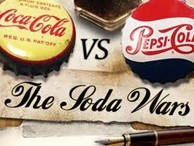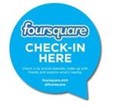
Since introducing their soft drink products Coca-Cola, Coke in 1886, and Pepsi (Cola) in 1898, both competitive companies are now using new, new media to market their respective brands with subtle and obvious comparisons and with major differences. While Coke has the greater customer interaction and use of its online space using new, new media, it also has by far more personal interactions with its customers using new, new media as well.
One of new media’s first corporate marketing efforts has been the introduction of companies’ web pages. The contrast of Coke’s website versus Pepsi’s is the first glimpse into how they both use their web presence and new media based on their company’s cultures and values.
Coke’s website allows a person to register which gives you access to the site; allowing you to receive emails related to its Coke product. After you register, a message appears on their website personally welcoming you to the world of Coke. You can go onto a section on the website called My Coke. Here you can track your Coke Rewards, download iPhone and other smart phone mobile Coke apps, download a virtual coke environment, download and play coke games, download wallpapers, screensavers and emotions, as well as view corporate videos and comment on those videos. You can also follow the man who invented Coke. The first thing you see front and center on Coke’s home page is a video where consumers are in a reality type of setting interacting with a large Coke prop trying to find clues to get more Coke points and prizes. Coke has a full, interactive website with various components so consumers can directly connect with Coke in a personalized way.
Pepsi does not allow you to register on their website. They also have a video front and center but unlike Coke’s whose video is about consumers in a reality setting interacting with Coke, Pepsi’s video is about a CNBC documentary on their company. Some of the first tabs you see are about Investors and Media. On the top of the page is their stock ticker showing how the company is doing financially. Their page also has a section on how they are featured in current media outlets. There is no way on their home page to interact directly with consumers. You can click on their hyperlinks to their other pages such as Facebook, Twitter and YouTube. Their website is extremely business orientated.
One of the first social networks sites, MySpace, which has lost much of its subscriber traffic in the past few years, has a Coke and Pepsi presence on it.
Coke’s MySpace page allows you to add them as friends, allowing you to make comments on their page. Aside from a Coke MySpace page, it has other MySpace pages as well such as Coke Music where Coke sponsors new artists.
Pepsi does not have any official MySpace account.
Pepsi also does not have an account on Bebo.
Coke has an account on Bebo and it is set up to resemble their MySpace account with a similar layout and similar sections.
 Pepsi has a strong presence on Foursquare with over seventy-six thousand followers. However, they have not updated their general information on their page since the summer. It refers to how ‘Summer Time is Pepsi’ and it mentions how a person can win a trip to the 2011 MLB World Series. Having outdated information on the main information page on any active social media website creates a negative impression with digital natives and with digital immigrants alike.
Pepsi has a strong presence on Foursquare with over seventy-six thousand followers. However, they have not updated their general information on their page since the summer. It refers to how ‘Summer Time is Pepsi’ and it mentions how a person can win a trip to the 2011 MLB World Series. Having outdated information on the main information page on any active social media website creates a negative impression with digital natives and with digital immigrants alike.Having over two-thousand members, Coke’s Flickr account is vibrant with images added not only by Coke themselves, but by subscribers as well. They allow subscribers to discuss their photos as well as there are currently twenty-three topics people are speaking about. Here again, Coke references their other pages such as Facebook, Twitter and YouTube. Conversely, Pepsi again does not allow for subscribers to join their Flickr account and post images or comments. Pepsi only allows subscribers to get their Flickr updated by an RSS feed. Their Flickr account also was updated last in September.
Coke once again offers a blog called Coca-Colaconversations.com. The Coke blogs take advantage of both video and pictures. Pepsi’s blog only contains pictures. Why would Pepsi limit their blog posts with just one type of media when videos can create a larger presence for them?
The only time a person can comment directly to Pepsi using new media is on their official blog space called Pepsicoblogs.com. However, these blogs are created by Pepsi themselves and one woman in particular is writing most of the recent blogs even though they have shown in the past they have used a pool of bloggers. It creates a diminished image when in most recent blogs one person is blogging.
One of the biggest growing new markets in the past few years has been the mobile smartphone applications, apps. Here once again is a stark difference between Coke and Pepsi using this new media.
 Coke has three-hundred and seventy-seven search results in the Android Market. Of those fifteen are directly related to Coke itself. Some of those include apps in Spanish, a huge demographic market. Coke has made many of these apps interactive. Some are simply just a glass or a bottle of Coke that acts like its real: fizzing, popping and sparkling. Others allow you to check your Coke Rewards points. Some of the other more consumer interactive apps include an app called Coke Push. This is a game app which allows for twenty-two levels of achievement by having players memorize Coke related drinks. Coke apps run the gamut from business related (Coke Rewards) to interactive (Coke Push) to fun such as virtual Coke bottles.
Coke has three-hundred and seventy-seven search results in the Android Market. Of those fifteen are directly related to Coke itself. Some of those include apps in Spanish, a huge demographic market. Coke has made many of these apps interactive. Some are simply just a glass or a bottle of Coke that acts like its real: fizzing, popping and sparkling. Others allow you to check your Coke Rewards points. Some of the other more consumer interactive apps include an app called Coke Push. This is a game app which allows for twenty-two levels of achievement by having players memorize Coke related drinks. Coke apps run the gamut from business related (Coke Rewards) to interactive (Coke Push) to fun such as virtual Coke bottles.Pepsi’s Android Market showed just fifty-five search results with just two apps created by Pepsi themselves. Their two applications include just one business app, the Pepsi Refresh Project. It allows subscribers to vote for and view various nonprofit projects being developed by its founders. Their apps have left out gamers as well as any fun applications.
Coke’s iPhone apps includes again, fun apps such as iPhoneMagicCokeBottle which is similar to the Magic 8 Ball, as well as Spin the Bottle, which has the Coke bottle as a traditional spin the bottle social kissing game. Whereas Pepsi’s main app on Apple’s store is their Pepsi Refresh Project, a nonprofit charity app. While Pepsi in the Apple store market does have a Spanish app called Pepsi Club, there are no ratings for this app because few people have downloaded it.
Both Coke and Pepsi have taken advantage of YouTube by having their own channels. Once again here using pure numbers, Coke outnumbers Pepsi by over four-million viewers on its channel. Coke has almost triple subscribers to its channel as well. Both of their YouTube accounts look nearly identical. Is this YouTube’s template for all large commercial accounts or has one competitor stolen the other’s environment style? Coke once again beat Pepsi to the punch by joining YouTube two full months before Pepsi.
 Coke’s YouTube videos include very genuine feeling ‘commercials.’ Their videos feel more like independent movies of Coke in various situations. Pepsi’s YouTube channel has a huge commercial feel to it.
Coke’s YouTube videos include very genuine feeling ‘commercials.’ Their videos feel more like independent movies of Coke in various situations. Pepsi’s YouTube channel has a huge commercial feel to it.According to Twitters’ website, Coke is more loquacious than Pepsi. Coke has a total of 42,945 tweets versus Pepsi’s 5,994. While both have nearly similar followers, Coke’s 425k versus Pepsi’s 341k, Coke has more to say to their followers at any given time. Coke tweets an average of eleven times per hour while I observed Pepsi tweeting once in the same hour.
One of the biggest new media presences a company can have is a Facebook page. Without a doubt and in the most glaring way regarding new media, Coke’s Facebook page
encompasses more aspects than Pepsi’s. Since Facebook is a kin to a company’s second ‘website,’ just as in the evidence of Coke’s and Pepsi’s websites, Coke’s has a more diverse and a more interactive presence.
Aside from the lopsided ‘likes’ on Facebook where Coke has 36 million verses Pepsi’s 6 million, Coke fans can talk directly to Coke and to one another by posting a comment on Coke’s Facebook wall. In a one hour period I observed that Coke fans commented an average of every four minutes with a total of two-hundred and sixty four posts in an 24-hour period. Coke’s Facebook page boasts a total of twenty-three additional sections some of them in different languages. Coke has many videos from around the world of people drinking Coke in various venues. There are many events where you can interact with Coke live at different world events.
Pepsi does not allow any members to post on their wall. You can only post comments on what they post. There are zero video’s on Pepsi’s Facebook page. Leaving a gaping hole where media content could speak further to fans. There are zero events listed on Pepsi’s Facebook page.
 Google+, the new kid on the block that boasts itself as a more intuitively secure social media community, has both Coke and Pepsi in their circle.
Google+, the new kid on the block that boasts itself as a more intuitively secure social media community, has both Coke and Pepsi in their circle.
Coke has both videos and pictures on Google+ and you can comment on both. Pepsi has no videos. It does have pictures but you can’t post comments about the pictures.
Coke’s Google+ page has full paragraphs about its history and about the product itself. Ironically, Pepsi’s Google+ page under its ‘About Us,’ section makes a very bold, ludicrous statement:
“Join Pepsi as we highlight how we’re evolving the digital consumer experience and learning from changing consumer behavior across all media.”
Coke fans feel they are part of the soda because Coke allows consumers to directly participate with the brand, while Pepsi fans can only be part of their product at arm’s length.














